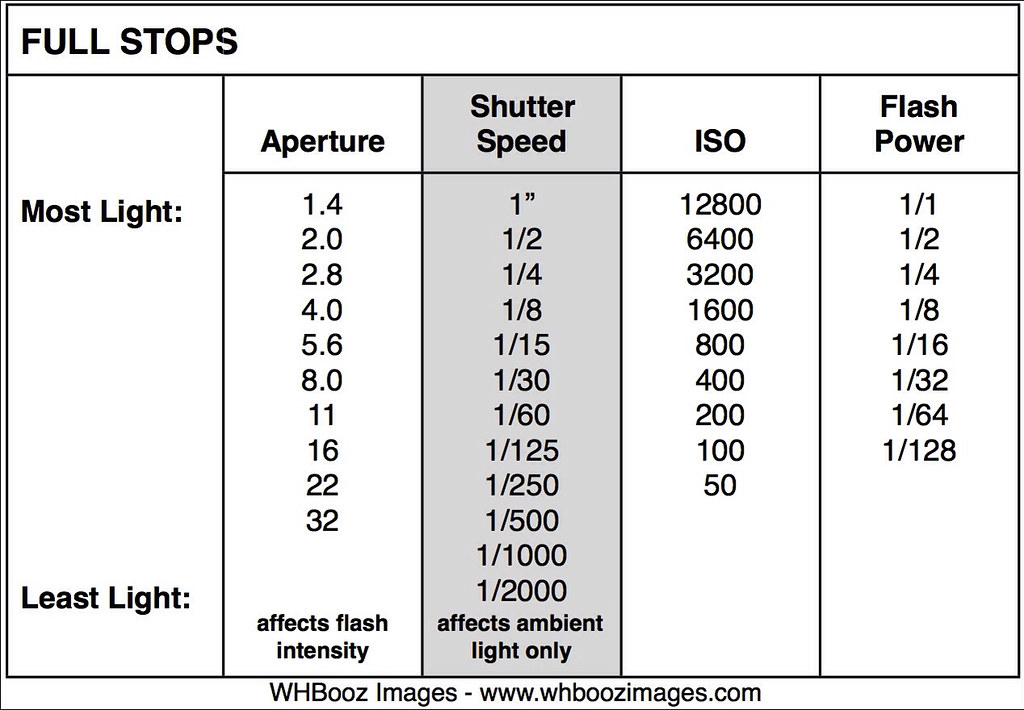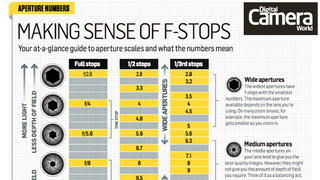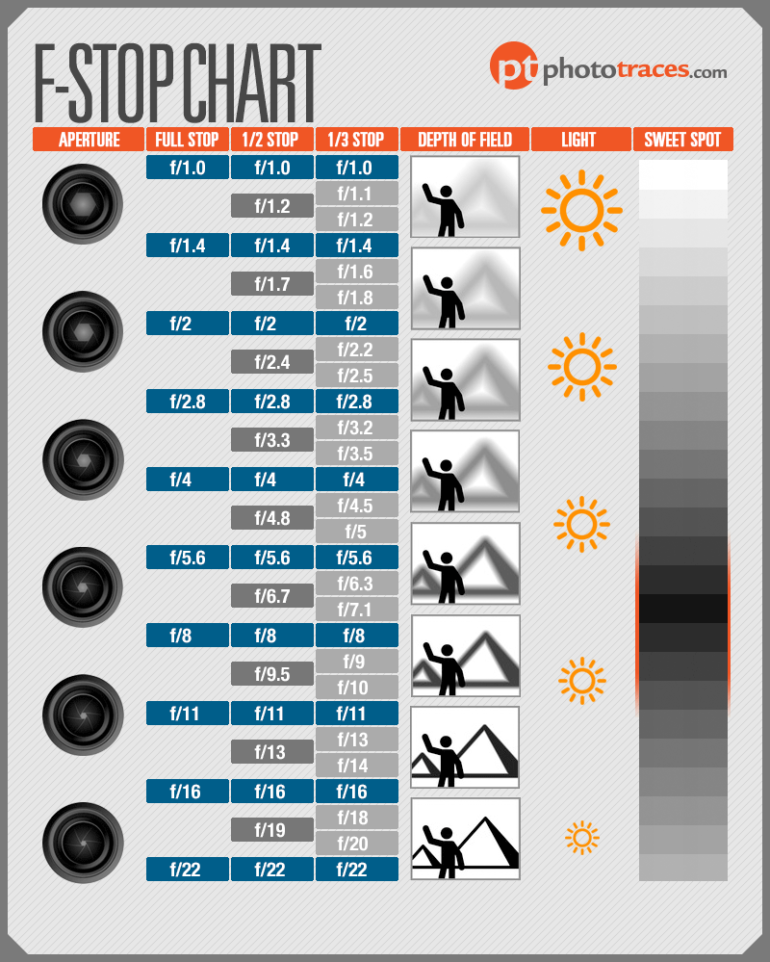
DRYING - bring the tank to the cabinent, turn off fan, remove film, squeegee off excess photo-flo, hang film by clip, weight bottom of film strip, secure door, set heat setting, turn on fanġ3. f/2: An f-stop of 2 means that the aperture is half its maximal size. Aperture size and f-stop are related the higher the f-stop, the smaller the aperture, and vice versa. f/1.4: This is as small as the aperture on most lenses gets. Here are some more photographs from different F Stops of ND filter. List of different f-stops and their relation to aperture, lens, and field of depth. PHOTO-FLO - removed lid and funnel, immerse film in photo-flo solution, ensure that hands are clean, gently agitate for 30 sec.ġ2. Video shooting with wide aperture lenses outside is another application if you want. Fill tank 5x with water, agitate the tank constantly for one minute each timeġ1. FIXER REMOVER - fill tank, agitate for two minutes. Your camera will also have a list of preset white balances.
#F stop list full
RINSE - fill tank with water and agitate for one full minuteĩ. Choosing a lens with a low f-stop will give your family photos the bokeh effect (blurry. An f-stop (or f-number) is the ratio of the lens focal length divided by the diameter of the entrance pupil of the aperture. Important: return used fixer to the film fixer containerĨ. Note: TMAX is always fixed for 6 minutes. FIX - First, test for clearing time with saved film-strip: fix time is 2x the clearing time. Sometimes, it will be shown without a slash in between like f2.8, or with a capital F letter in the front like F2.8, which means the exact same thing as f/2.8. STOP BATH OR WATER - 30 sec., constant agitation. On your camera’s LCD screen or viewfinder, the f-stop looks like this: f/2.8, f/4, f/5.6, f/8, f/11, and so on. DEVELOPMENT - measure temperature, refer to posted recommendation, set timer, pour in developer, rap tank 3x, agitate constantly for 1 minute and then agitate for 5 seconds for every minute thereafter. as developer solution), rap 3x and agitate for 1 minuteĥ. PRE-SOAK - fill tank with water (same temp. Spring chemistry standard dilution is 1:9. PREPARE CHEMISTRY - All film processing chemistry is pre-mixed. REGULATE WATER TEMPERATURE - 68, 70, or 72 degrees Fģ. A stop refers to a change in exposure that is equal to what, List the full, standard f/stop settings starting from f/2 through f/22, List the full. While we can get the maximum or minimum depth of field by working at each end of the aperture range, sometimes we want a more intermediate level of depth of field, limiting focus to a specific range of distances within the overall photograph. One way to do this is to choose a mid-range f/stop, like f/5.6, and shoot a test frame. In image playback, use the magnifying function of the LCD to zoom in and check the depth of field make adjustments if necessary and reshoot.2. As such, for the same f-stop, the lens diameter.

When choosing lenses for landscape photography, we usually want to see as much detail as possible from foreground to background we want to achieve the maximum depth of field by choosing a small aperture (higher f/stop, like f/8 or f/11). The f-stop is a way of describing the size of the aperture in relation to the focal length of the lens. This helps direct the viewer's attention to the subject. F-Stop Rentals has supplies and equipment for all departments from Production, Art, Wardrobe, Crafts, G&E, Location Protection, PPE Sanitation. F-stops are measured in one-third f-stop increments starting at f/1.0 or as T-stops, which are an exact measure of the amount of light entering the lens instead.

Aperture for Portraitsįor classic portraiture we separate our subject from the surroundings by using "selective focus." Choosing a large aperture (lower f/stop, like f2.8) creates very shallow depth of field with only the subject, or just a portion of the subject, in focus.

#F stop list how to
Now that we know how to control depth of field, what determines the choices we make in selecting the aperture? We use focus and depth of field to direct attention to what is important in the photograph, and we use lack of focus to minimize distractions that cannot be eliminated from the composition. While there are no rules, there are some guidelines for selecting Aperture priority.


 0 kommentar(er)
0 kommentar(er)
